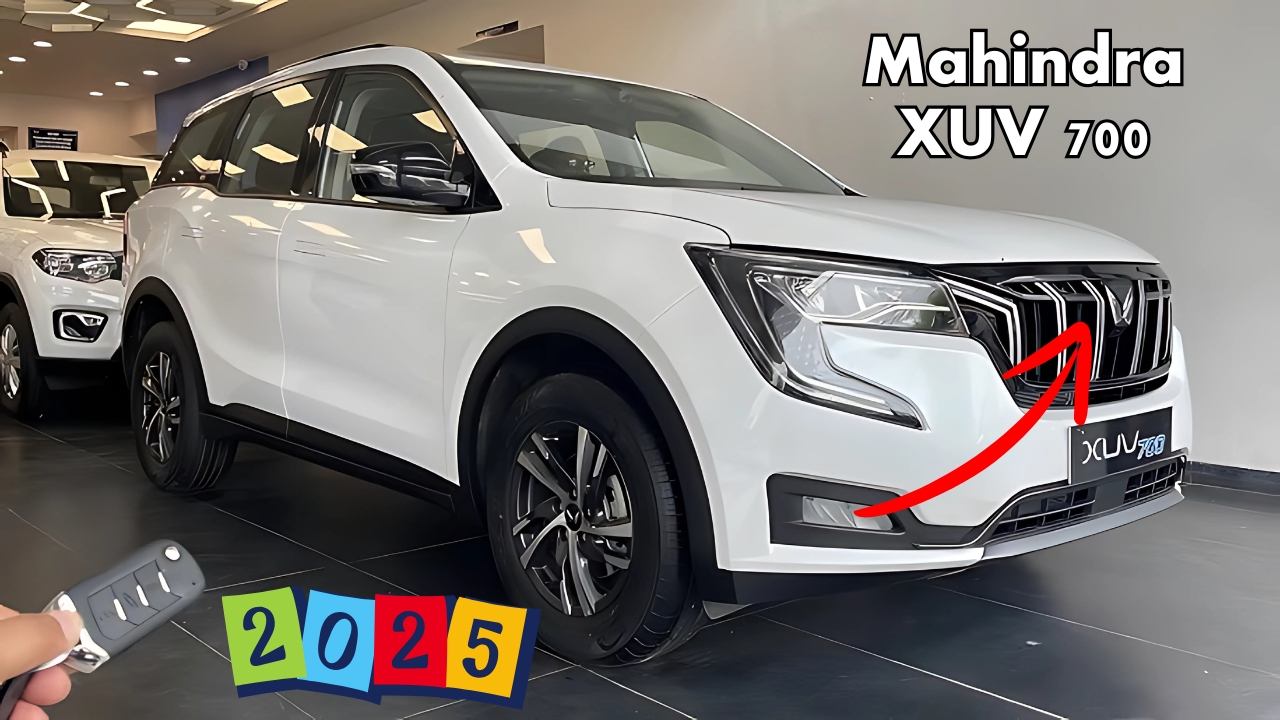Maruti Baleno 2025 : In the rapidly evolving Indian automobile scene, Maruti Suzuki has brilliantly maneuvered the tightrope of affordability and appealing features. The Baleno, which debuted in 2015 and received a facelift in 2022, embodies this vision by combining high-end features with a budget-friendly price tag.
As per various industry reports, Maruti is set to elevate these benchmarks with the 2025 Baleno – an upcoming model that aims to innovate the premium hatchback category through smartly integrated features, upgraded engineering, and surprisingly reasonable pricing.
The forthcoming Baleno is said to build on the solid foundations of its predecessor, avoiding drastic overhauls. Insiders familiar with the development process suggest that Maruti’s strategy focuses on addressing customer feedback while preserving the core qualities that have made the model so popular.
“Successful products need careful improvement,” shares a seasoned automotive product planner who preferred to remain anonymous. “Sometimes, companies confuse novelty with real improvement, sacrificing what works well in favor of differentiation.
Maruti, however, is committed to thoughtful enhancement – keeping what customers love while meticulously upgrading areas that necessitate improvement.”
This philosophy is evident throughout the new model, from subtle design tweaks on the outside to a thoroughly redesigned interior.
The general shape remains familiar, yet it boasts more sophisticated surface details.
The front end is set to be particularly striking, featuring redesigned LED headlights that elegantly frame a chic new grille design, establishing a stronger visual identity without unnecessary extravagance.
Maruti Baleno 2025 Interior: Emphasizing Quality through Attention to Detail
The most significant advancements in the 2025 Baleno are likely to be found within its cabin.
Preliminary dealer materials indicate a complete reassessment of materials, textures, and layouts – aimed at enhancing perceived quality through well-considered, frequently touched surfaces rather than superficial flourishes.
The dashboard features a layered design made from soft-touch materials with meticulous stitching that hitherto could only be found in much pricier vehicles.
The center console shines with judiciously applied piano black finishes, avoiding overwhelming areas prone to fingerprints.
This thoughtful approach highlights a level of design restraint often missing in this segment.
Seating surfaces deserve special mention, boasting enhanced bolstering and cushioning designed for comfort during long drives.
Thigh support, a common issue in compact cars, is specifically addressed through revised cushion profiles and slightly extended seat bases in the front.
Passengers in the rear also enjoy improved cushioning and a bit more legroom thanks to reshaped front seatbacks.
Most importantly, the interior creates a premium feel through subtle details rather than flashy technologies.
Elements such as fabric-wrapped A-pillars, dampened controls, and uniform lighting showcase an awareness of sensory quality that sets it apart from competitors fixated on feature accumulation.
Maruti Baleno 2025 Technology Integration: Prioritizing Substance
While several manufacturers chase technological upgrades primarily for marketing edge, the 2025 Baleno is reportedly designed with real-world user needs in mind.
The infotainment system centers around a 9-inch touchscreen that supports wireless smartphone connectivity, bolstered by physical controls for frequently used functions – recognizing that exclusive reliance on touchscreens can compromise usability while driving.
The driver’s instrument panel smartly blends analog displays with a larger, customizable central information screen that emphasizes clarity through intentionally chosen typography and contrast.
This mixed approach balances traditional readability with data flexibility more effectively than fully digital alternatives that often sacrifice clarity for visual flair.
Additionally, safety features undergo comprehensive upgrades with advanced sensors enabling more intuitive intervention behavior.
The automated emergency braking system is expected to offer larger detection areas with enhanced pedestrian recognition abilities.
Lane-keeping assistance is said to provide more nuanced steering adjustments, aiding rather than overpowering driver decisions, addressing common complaints regarding these systems.
Impressively, the upcoming Baleno is rumored to incorporate over-the-air updates for both its infotainment and vehicle control systems.
This capability promises continuous upgrades throughout the duration of ownership – a feature previously typical of premium models only.
The implementation reflects foundational software architecture choices made early in development, not a later add-on for connectivity.
Maruti Baleno 2025 Engineering Enhancements: Subtle Yet Significant
Beyond the immediate upgrades, the 2025 Baleno will reportedly see profound engineering improvements addressing aspects that are not immediately visible during a dealership visit but become increasingly tangible with ownership.
Special attention is given to reducing noise, vibration, and harshness through enhanced sound insulation, refined suspension bushings, and improved powertrain isolation.
The suspension retains its core layout while incorporating freshly tuned spring rates and damping tuned specifically for Indian road conditions.
This tuning is designed to effectively manage rough surfaces without excessive body sway, finding a sophisticated balance between comfort and control usually reserved for more premium models.
Powertrain options may include an advanced iteration of the existing 1.2-liter naturally aspirated engine alongside a new turbocharged variant for improved performance with similar efficiency.
Both engine choices benefit from enhancements focusing on driveability rather than simply impressive numbers on a specification sheet – aiming for a more consistent response across various driving conditions.
The continuously variable transmission (CVT) also receives significant developmental focus, prioritizing a smoother response over simulated gear changes.
Of utmost importance, the new platform integrates added high-strength steel in crucial areas, boosting structural rigidity without excessive weight increases.
This approach enhances not only crash safety but also handling precision and ride comfort by reducing chassis flex under dynamic and static conditions.
Maruti Baleno 2025 Pricing: A Smart Strategy
Remarkably, sources indicate that Maruti intends to adopt an aggressive pricing strategy for the 2025 Baleno, despite the substantial enhancements.
This strategy reflects multiple strategic factors beyond merely capturing market share.
Manufacturing efficiency is a major player in this strategy. The Baleno benefits from optimal production processes at Maruti’s Gujarat facility, where advanced automation and logistics efficiency provide cost advantages that international rivals find hard to replicate.
Moreover, the increased localization of components – now exceeding 95 percent – buffers pricing against currency volatility while promoting local manufacturing efforts.
“The pricing strategy not only takes into account increased competition but also leverages Maruti’s core strengths,” explains an industry analyst focused on automotive market trends.
“Rather than going head-to-head with feature comparisons against newcomers, Maruti can present comprehensive value propositions that emerging players simply cannot provide, given their production constraints and limited economies of scale.”
Base models are set to start about ₹15,000-25,000 higher than current versions, reflecting modest increases relative to ongoing inflation.
For higher trims, the value enhancement is even more pronounced, with top-end variants offering features that previously required costly optional packages now included as standard, all while remaining below key pricing thresholds.
This strategy could exert tremendous pressure on competition, particularly newer entrants attempting to carve out their niche through feature differentiation rather than core value.
By providing comparable or superior features with a well-established reputation for reliability at lower prices, Maruti can effectively counteract the primary advantage enjoyed by these challengers.
Maruti Baleno 2025 Ownership Experience: Beyond the Initial Sale
Alongside product enhancements, Maruti is reportedly looking into improving the entire ownership experience, addressing both the practical and emotional factors of owning a Baleno.
Service intervals are set to extend to 15,000 kilometers, meaning less frequent maintenance visits, while digital service scheduling and documentation streamline necessary interactions.
Standard warranty coverage expands to 5 years/100,000 kilometers, eliminating the need for costly optional extensions – a testament to their confidence in the underlying engineering while addressing concerns over ownership expenses.
This warranty is expected to encompass roadside assistance and complimentary health checks aimed at preventive maintenance.
Perhaps the most innovative change comes in the form of the MyMaruti app, which is set to receive significant enhancements specifically for Baleno owners, featuring expanded capabilities like predictive maintenance recommendations based on real vehicle data rather than just mileage metrics.
This system aims to pinpoint emerging concerns before they escalate into noticeable problems or roadside emergencies – simultaneously boosting convenience while minimizing long-term ownership costs.
Maruti Baleno 2025 Conclusion: A Thoughtful Evolution Shaping Industry Standards
The Maruti Baleno 2025 is on track to reshape the expectations of premium hatchbacks, focusing on meaningful enhancements rather than mere specification boosts or flamboyant designs.
By addressing key ownership priorities like quality, usability, sophistication, and cost-effectiveness while keeping the price within reach, Maruti is set to set new benchmarks that competitors may struggle to meet.
What distinctively sets this initiative apart is its customer-centric development process rather than mere reaction to competition or attempts to showcase technology.
These improvements directly respond to the actual ownership experience rather than just making an impression through marketing tropes, thus creating real value through better experiences instead of raw data advantages that seldom yield tangible benefits.
For prospective buyers weighing their options in the premium hatchback realm in 2025, the Baleno emerges as a compelling choice – promising an upgraded ownership journey without stretching the budget.
This balanced evolution reflects a level of maturity in manufacturing that is often missing in sectors driven by flashy features rather than comprehensive transportation solutions.






